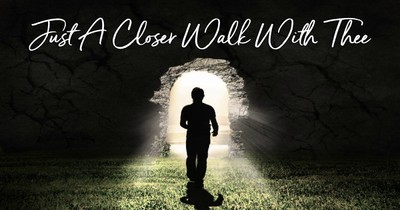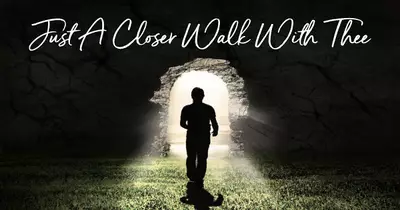The Story Behind Just a Closer Walk with Thee
The precise author of "A Closer Walk" was unknown until recently. Circumstantial evidence strongly suggested it dated back to southern African-American churches of the nineteenth century, possibly even prior to the Civil War, as some personal African American histories recall "slaves singing as they worked in the fields a song about walking by the Lord's side.". Horace Boyer cites a story that repudiates this claim, stating:
“On a train trip from Kansas City to Chicago, Morris exited the train on one of its stops to get some fresh air and heard one of the station porters singing a song. He paid little attention at first, but after he reboarded the train the song remained with him and became so prominent in his mind that at the next stop, he left the train, took another train back to the earlier station, and asked the porter to sing the song again. Morris wrote down the words and music and published the song “Just a Closer Walk with Thee” that year, 1940, adding a few lyrics of his own to provide more breadth. Within two years the song became a standard in gospel music, eventually becoming a standard in Jazz, and then moving into the realm of American folk music, known and sung by many.”
Songs with similar chorus lyrics were published in the 1800s, including "Closer Walk with Thee" with lyrics by Martha J. Lankton (a pseudonym for Fanny Crosby) and music by William Kirkpatrick, which was published in 1885. Some references in Atchison, Kansas, credit an African-American foundry worker and vocalist, Rev. Elijah Cluke (1907-1974), for the current rendition of the song. "Just a Closer Walk with Thee" became better known nationally in the 1930s when African-American churches held huge musical conventions. In 1940 Kenneth Morris arranged and published for the first time the well-known version after gospel musicians Robert Anderson and R.L. Knowles listened to William B. Hurse direct a performance of it in Kansas City and then brought it to Morris' attention. Morris added some new lyrics and a choral arrangement. In the 1940s, a boom of recordings recorded the number in many genres, ranging from Southern gospel to jazz and brass bands.
The title and lyrics of the song allude to the Biblical passage from 2 Corinthians 5:7 which states, "We walk by faith, not by sight" and James 4:8, "Come near to God and he will come near to you."
Popular Hymn Lyrics with Story and Meaning
Day by Day and With Each Passing Moment
Jesus Loves Me
What a Friend We Have in Jesus
Blessed Assurance
Nearer My God to Thee
Abide with Me
His Eye is On the Sparrow
Be Thou My Vision


